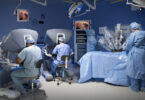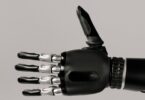[et_pb_section bb_built=”1″][et_pb_row][et_pb_column type=”4_4″][et_pb_text _builder_version=”3.13.1″]
Obstructive sleep apnea is a stoppage of breathing that is characterized because people who suffer from it usually snore, have repeated stops of breathing and drowsiness during the day.
This happens when the muscles in the upper part of the throat relax during sleep, the tissues close and block the airway.
Stronger snoring is a warning symptom of tonsils and large adenoids that can block the airways. Apnea is severe, when it produces an increased risk of diseases such as increased blood pressure, increased risk of angina, and even heart attacks and strokes.
There are three types of sleep apnea:
Obstructive sleep apnea: the most common. It consists of the difficulty of air flow and is due to an obstruction of the airway. It happens while the person sleeps lying down, the soft parts of the throat move backwards and close the way. This can cause the person to wake up continuously for brief moments, without remembering that he did so during sleep.
Central sleep apnea: is when the brain stops sending the appropriate signals to the muscles that control breathing, so they stop working, interrupting it. In this case, the person can also wake up and it is more frequent for the person to remember that he woke up during sleep.
Mixed sleep apnea: are those cases that start as a central apnea and eventually have an obstructive component.
To treat this syndrome there is a continuous positive pressure device in the respiratory tract (C.P.A.P., for its acronym in English), however, many people refuse to use it.
Currently, an implant is being marketed that favors the synchronization of the air intake with the action of the tongue through a breathing sensor and a stimulation cable driven by a small battery. It is controlled by a remote patch or placed on the person, this technology has had positive results in clinical trials and is expected to be the technology to provide a better night sleep to more people and provide better quality of life.
These and other innovations are now possible in Pharmamedic.
[/et_pb_text][/et_pb_column][/et_pb_row][/et_pb_section]








